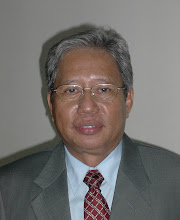There are several river basins that should be developed properly to manage the water resources in supporting the needs for Jakarta and its surrounding areas. From west to east the river basins are Cisedane, Ciliwung, Bekasi, and Citarum river basins.
The 2007 Jakarta Flood
This was happened in early February 2007 and the death toll was reported at about 57 with around 230,000 displaced. Kampung Melayu was one of the worst-hit area. Sofyan Wanandi, from the Indonesian Employers Association told the paper, as quoted by Borneo Post, said that losses at manufacturing firms in Jakarta could top 1 trillion rupiah or US $ 110.7 million. At one stage, 2000 relay station had been shut-up, and already back to normal since February 9.
The flooded area was covering Jakarta, Tangerang, and Bekasi. Clean water supplied had been cut to about 500,000 people due to the flood which had inundated treatment plants. The flood was the worst that hit Jakarta since 2002, when 40 people were killed. Rescuers were using inflatable boats to evacuate trapped residents from their flooded houses.
At the fourth days of flood, on February 5, 2007, the Kompas daily news reported that the water level at Manggarai watergate had reached 1.050 cm or high above the normal height at 750 cm, and the water was still rising.
The National Government later announce in late February 2007, that the Jakarta floods' losses nearly US $ 1 billion. The floods which hit on February 2 covered much of the city, some 85 people were killed in the city and its surrounding areas. The excessive construction, which had not been accompanied by improved drainage was blamed as the caused of flooding.
The 2007 Jakarta Flood
This was happened in early February 2007 and the death toll was reported at about 57 with around 230,000 displaced. Kampung Melayu was one of the worst-hit area. Sofyan Wanandi, from the Indonesian Employers Association told the paper, as quoted by Borneo Post, said that losses at manufacturing firms in Jakarta could top 1 trillion rupiah or US $ 110.7 million. At one stage, 2000 relay station had been shut-up, and already back to normal since February 9.
The flooded area was covering Jakarta, Tangerang, and Bekasi. Clean water supplied had been cut to about 500,000 people due to the flood which had inundated treatment plants. The flood was the worst that hit Jakarta since 2002, when 40 people were killed. Rescuers were using inflatable boats to evacuate trapped residents from their flooded houses.
At the fourth days of flood, on February 5, 2007, the Kompas daily news reported that the water level at Manggarai watergate had reached 1.050 cm or high above the normal height at 750 cm, and the water was still rising.
The National Government later announce in late February 2007, that the Jakarta floods' losses nearly US $ 1 billion. The floods which hit on February 2 covered much of the city, some 85 people were killed in the city and its surrounding areas. The excessive construction, which had not been accompanied by improved drainage was blamed as the caused of flooding.

Comments